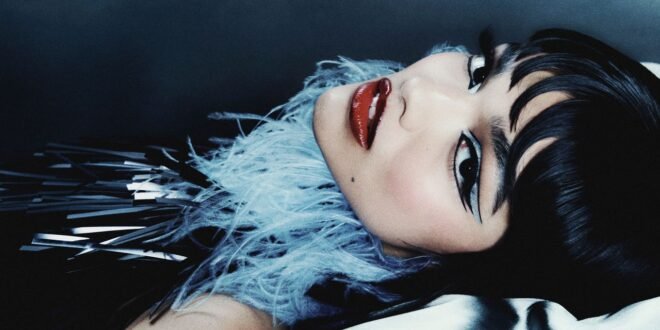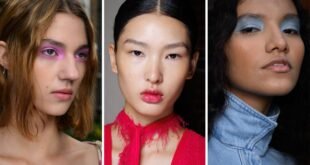“I feel like an actual princess,” says Rachel Zegler, glimpsing herself in the floor-to-ceiling mirror of Christian Dior’s VIP client lounge on Fifth Avenue in Manhattan. The silk taffeta dress she’s being fitted for, with its corset bodice and cinched, belted waist, feels like a true fairy tale come to life, and Zegler plans to wear it to the LA premiere of Snow White. The light pink skirt is full and flowing. Delicate butterfly appliqués across the bust add a whimsical touch. Created with over 400 hours of craftsmanship, the look is sure to have every bride-to-be on Pinterest adding Zegler’s red carpet moment to their dream wedding board.
Dior’s creative director, Maria Grazia Chiuri, designed two recent custom looks for Zegler (she wore the first one to the Oscars). These aren’t just any dresses—they’re gowns fit for a Disney Princess. Because this month, Zegler stars in the live-action remake of the 1937 animated classic. At just 23, this self-described theater kid from New Jersey has already won a Golden Globe for her movie debut as María in Steven Spielberg’s West Side Story and recently completed a successful Broadway run as Juliet in Romeo + Juliet. Now, she is stepping into yet another of the most beloved (and loaded) roles in history.
Loaded, because Snow White isn’t just any fairy tale. It’s the fairy tale. And this casting? It set comment sections on fire. The backlash was familiar—Halle Bailey’s casting as Ariel in The Little Mermaid had already sparked a similar firestorm. Some decried it as another example of “woke” Hollywood forcing diversity, claiming audiences were tired of identity politics in entertainment. Others mocked the film with dismissive nicknames, twisting the title into racially charged wordplay. And then there were those who framed it as an attack on tradition, arguing that classic European folklore shouldn’t be tampered with. Now Zegler, whose mother’s family is Colombian, finds herself at the center of a culture war she never signed up for. Certain corners of the internet have lost their minds over the fact that she isn’t, as the Brothers Grimm wrote in 1812, “white as snow” (arguably, a reference less to race than to nobility, as aristocrats didn’t labor in the sun). At the fitting, I’m struck by how petite Zegler is—like a baby bird—with eyes as wide as saucers and raven-black hair. It’s only her unmistakable Garden State accent that reminds me this doll-like vision wasn’t crafted by a Disney Imagineer. And it’s impossible not to feel the weight of every eye on her—not just the Disney fans, but the critics who see her casting as part of a larger debate.
The intensity of this reaction isn’t just about Snow White. It’s about where we are as a culture. Affirmative action has been struck down in US college admissions. Books are being banned in schools and public libraries. Diversity, equity, and inclusion initiatives are being rolled back and, in many cases, wiped out. The debate over who gets to embody a fairy-tale princess carries a new weight right now. But the fact is that Latinos are the fastest-growing demographic in the US, a presence that will only continue to shape this country. If young Latinas see themselves in Snow White, it’s not a rewriting of history. It’s an acknowledgment of the country as it is today.
How did she land the job? That question, far too often, is one that women—especially women of color—are forced to answer, while it’s rarely asked of white men. It’s offensive on its face, and I cringe at the thought of how to broach this over our upcoming lunch interview.
As we make our way to BG, a restaurant at nearby Bergdorf Goodman, it has been 1,337 days since Disney announced the cast of Snow White and the so-called “controversy” over a Latina landing the title role erupted across social media and beyond. Zegler has had ample time to reflect on the question we both know I have to ask. She doesn’t flinch.
 Info Malang Raya Its All About World News
Info Malang Raya Its All About World News





